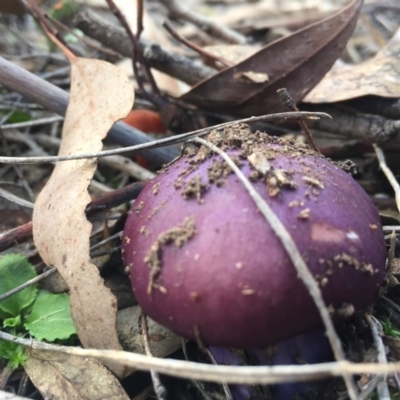Cortinarius archeri s.l. (Emperor Cortinar)
Cortinarius archeri is at first a striking violet to purple but becomes brownish with age, sometimes losing all traces of the early colour (as you can see here: http://www.cpbr.gov.au/fungi/images-captions/cortinarius-archeri-0039.html). The cap (up to about 10 cm in diameter) is viscid, but this may not show in dry conditions. At first there is a cobwebby sheet (technically a cortina) that extends from the stem to the edge of the cap and so covers the gills. As the cap expands the cortina breaks at the cap margin but usually you still see the remnants on the upper part of the stem. The spores are rust brown and as they may be shedding before the cortina has ruptured it is common to see rusty spore deposits on the cortina remnants. Cortinarius microarcheri, Cortinarius subarcheri and Cortinarius bundarus are visually similar, the differences between the species being in the microscopic features. For that reason, photographs can be identified only to this group, not to a particular species, and so will be labelled Cortinarius archeri s.l.
The species Lepista nuda (see: https://canberra.naturemapr.org/species/7499) is superficially similar but that species lacks a cortina, the cap is dry and the spore print is white.
Cortinarius archeri s.l. is listed in the following regions:
Canberra & Southern Tablelands | South Coast | Tasmania
Species information
- Cortinarius archeri s.l. Scientific name
- Emperor Cortinar Common name
- Not Sensitive
- Local native
- Non-invasive or negligible
- Up to 1076m Recorded at altitude
- Machine learning
- External link More information








































